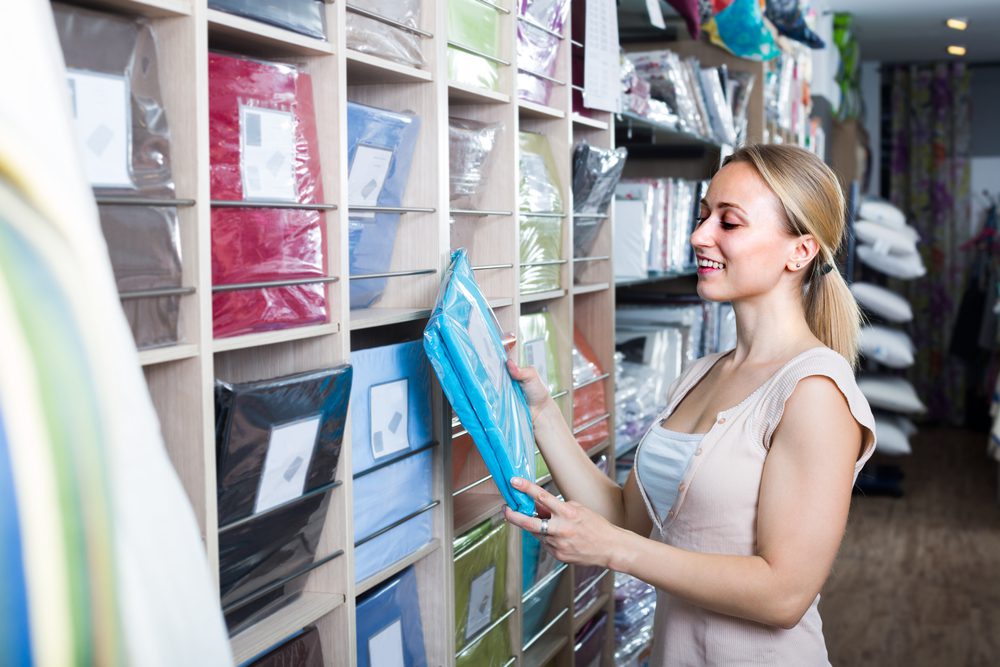Mattress pads and toppers are often thought to be one and the same, since they are both placed on top of a mattress to adjust its comfort level. But despite their likeness, they are distinct accessories with different functions.
We’ll highlight the similarities and differences between mattress pads and mattress toppers, including their functions, materials, construction method, and care instructions. We’ll also cover how sleep position, body size, and other factors determine which accessory is best for you.
What Is a Mattress Pad?
A mattress pad is typically between 1 and 2 inches thick and is used on top of a mattress to adjust its comfort level. It also protects a mattress from sweat, dirt, liquids, and accidents.
Mattress pads are made from a variety of natural and synthetic materials. Pads can fine-tune the feel of your mattress, but they won’t significantly change its firmness level.
Types of Mattress Pads
Mattress pads are useful for sleepers wanting to make subtle changes to the feel of their mattress. They can make an uncomfortably firm bed plusher or reinforce a soft mattress. Waterproof mattress pads shield your bed from liquids and spills. Different materials affect a mattress pad’s performance and care requirements in different ways.
- Wool: Wool is a soft and breathable natural fiber made from the crimped hair of sheep. A wool mattress pad can soften a very firm mattress while wicking away heat and moisture. Wool also acts as a natural flame retardant.
- Synthetic Fiber: Mattress pads are commonly made with polyester fill, a soft and fluffy synthetic fiber. They are suitable for vegans and people with allergies to natural down and feathers. Synthetic fiber mattress pads are generally affordable and increase plushness without adding much weight to a bed. While not as breathable as some natural materials, their lightweight design doesn’t usually retain much heat.
- Down and Feather: These natural fibers come from the soft plumage of ducks and geese. Down and feather mattress pads are notably plush and breathable, so they can soften a bed without generating much heat. Down and feathers tend to clump over time, so regular fluffing is needed to maintain an even surface.
What Is a Mattress Topper?
A mattress topper is intended to make a bed notably firmer or softer. They are typically between 1 and 4 inches thick and come in a wider variety of materials than mattress pads. Toppers aren’t designed to safeguard a mattress from accidents and liquids.
Some toppers are fastened with elastic straps, while others rest freely on top of a mattress. Toppers are sometimes used to restore an older mattress that’s lost some of its shape and support.
Types of Mattress Toppers
The extent to which a topper softens or adds structure to a mattress largely depends on its materials. The same can be said about a topper’s ability to rejuvenate a mattress that’s past its prime.
- Wool: Wool mattress toppers can soften an overly firm mattress while regulating surface temperature. They’re often a good choice for hot sleepers looking to add a layer of plushness to their bed.
- Latex: Made from either natural or synthetic latex, these toppers enhance a mattress’ responsiveness and pressure relief. While latex has an inherently springy feel, the specific properties of natural latex depend on its production method. Talalay latex toppers are a good choice for hot sleepers who enjoy some bounce. Denser Dunlop latex toppers are better for people looking to stabilize a very soft mattress.
- Memory Foam: This popular bedding material conforms to the body while alleviating tension. A memory foam topper can cushion a rigid mattress or bolster a sagging one. By boosting pressure relief, they may benefit people with muscle or joint pain. Memory foam toppers also act as shock absorbers for noise and motion, which helps reduce nighttime disturbances.
- Synthetic Fiber: These toppers are often economical and easy to wash. Most contain a soft and lightweight polyester fill that softens a firmer mattress without trapping too much heat. Polyester toppers aren’t as substantial as other materials, so they won’t add much structure to a soft or aging mattress. They also tend to flatten over time. That said, polyester toppers can be an inexpensive remedy for extra firm mattresses.
- Down and Feather: While not as supportive as memory foam or latex, down and feather toppers add plushness to a mattress. They also regulate temperature well, making them a good year-round option. While they tend to be pricier, they’re often quite durable. Down and feather toppers can trigger allergies for some people.
Differences Between Mattress Pads and Mattress Toppers
While mattress pads and toppers serve similar purposes, they also fulfill different aims. Mattress pads make subtle adjustments to comfort while keeping your mattress clean and dry. Toppers are designed to change the firmness level of your mattress or revitalize an older model. Mattress toppers generally aren’t intended to protect a bed from liquids and contaminants.
Mattress Pad vs. Mattress Topper
Mattress Pad | Mattress Topper | |
|---|---|---|
Price | Most mattress pads are between $20 and $300, depending on the quality and materials used. | Toppers typically range from $150 to $400, though budget and high-end options are also available. Like mattress pads, price depends on factors like type and brand reputation. |
Feel | A mattress pad adds subtle plushness without drastically changing the feel of a bed. | Depending on the materials and construction, a topper can make a mattress notably softer or firmer |
Price |
|
|
Cons |
|
|
Average Lifespans
The average lifespan for both mattress pads and toppers is around three to five years. Durability depends on manufacturing quality and materials, but proper care can also increase longevity.
Always use sheets with your mattress pad or topper to help prevent stains and residue buildup. Adhering to the manufacturer’s cleaning guidelines also minimizes premature wear. Certain materials like down, feathers, and polyester fill require regular fluffing to ensure even support.
Cleaning and Care
Just as cleaning your mattress is necessary from time to time, washing your mattress pad or topper keeps your sleep space more hygienic. Always refer to your product manual before undertaking a cleaning regimen, as every model has its own care guidelines.
Most mattress pads are fairly low-maintenance and can be washed using household machines and mild detergent. Line drying or tumble drying on low helps reduce wear and tear.
Many toppers have covers that are machine-washable, while others should only be spot-treated or professionally cleaned. For interior layers that can’t be washed by machine, using a gentle detergent or a mixture of baking soda and cold water can lift stains. This solution can also be used to spot-treat mattress pads.
While regular cleaning is important for hygienic reasons, overwashing can degrade materials like down and wool.
Is a Mattress Pad Right for You?
For people looking to enhance the comfort of their mattress without breaking the bank, a mattress pad can be an affordable solution. They’re also fitting for accident-prone households since they shield a mattress from liquids and spills.
- You’re looking for a slight change in feel: Mattress pads create modest changes in comfort by softening a very firm mattress or reinforcing an older model that’s starting to sag. They don’t significantly change a mattress’ firmness level.
- You want to protect your mattress: A mattress pad can shield your mattress from sweat, oil, dirt, and allergen buildup. Many parents find waterproof mattress pads an asset during bedwetting stages.
- You want to make your bed easier to clean: By acting as a protective barrier, a mattress pad cuts down on the frequency of needing to vacuum or spot-treat your mattress. Most mattress pads can be machine-washed and tumble dried.
Would a Mattress Topper Suit Your Needs?
The best mattress toppers are ideal for sleepers wanting to make their mattress notably softer or firmer. People in need of extra pressure relief can benefit from thicker models that offer more substantial cushioning.
- You want to adjust your mattress firmness: Toppers can be helpful if your current mattress firmness isn’t compatible with your sleep position or body weight. For example, a firm topper on a soft mattress can enhance support for stomach sleepers and people over 230 pounds, while side sleepers on very firm beds may gain pressure relief with a plush topper.
- You’re looking to extend the life of an older mattress: A topper can’t resurrect an old bed entirely, but it can postpone having to buy a new one by compensating for uneven wear.
- You’d like to protect your new mattress from wear and tear: A topper’s extra layer of support can protect your new mattress from premature sagging and indentations.
Ask the Sleep Doctor
Have questions about sleep? Submit them here! We use your questions to help us decide topics for future articles, videos, and newsletters. We try to answer as many questions as possible. You can also send us an email. Please note, we cannot provide specific medical advice, and always recommend you contact your doctor for any medical matters.







